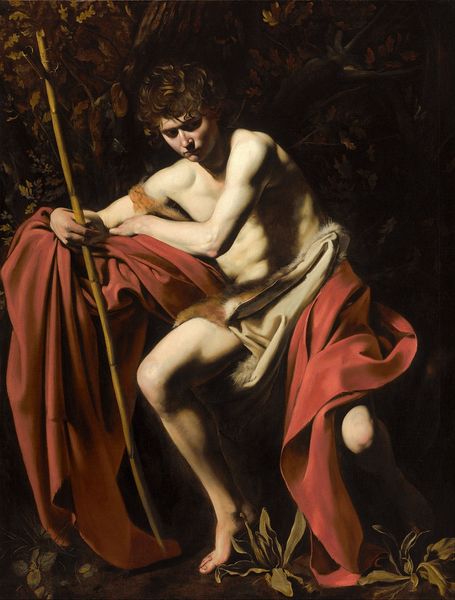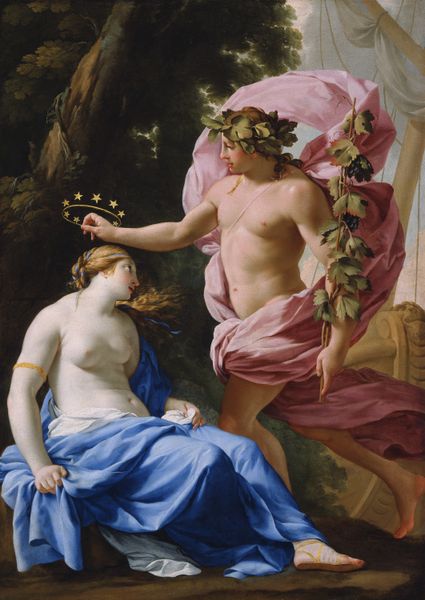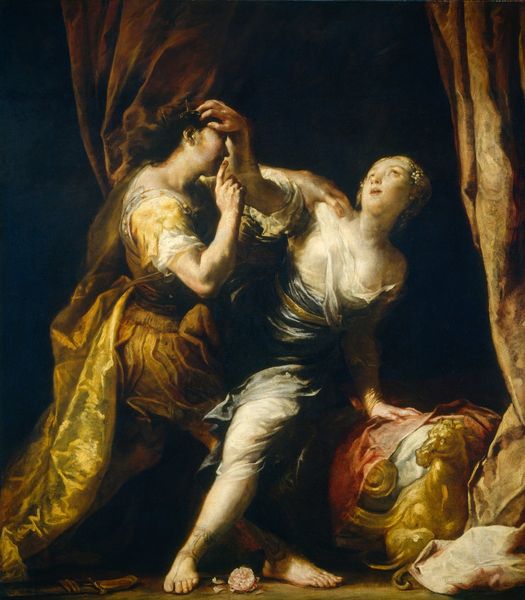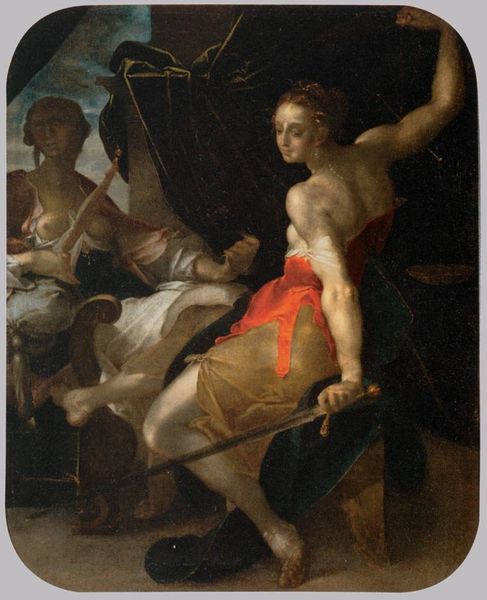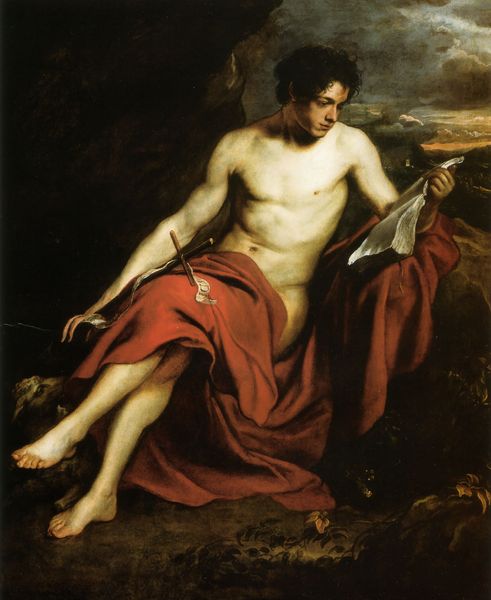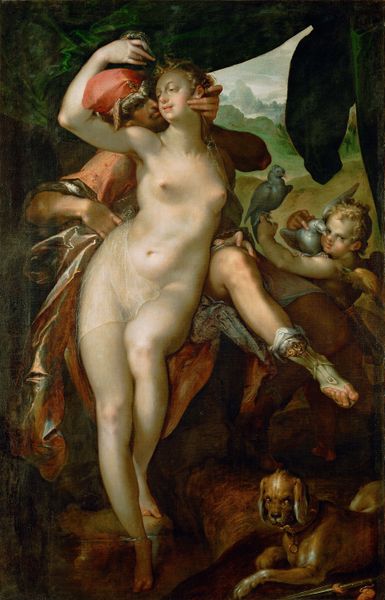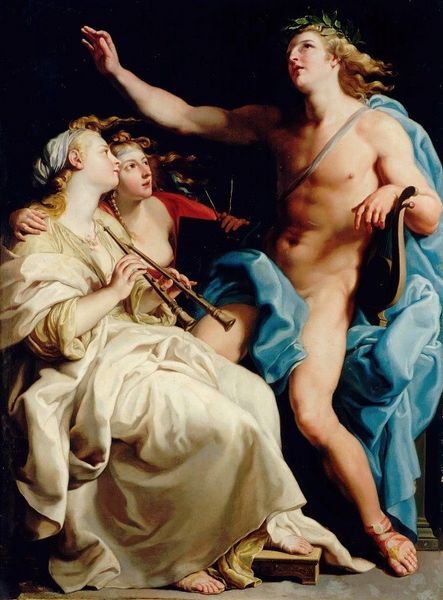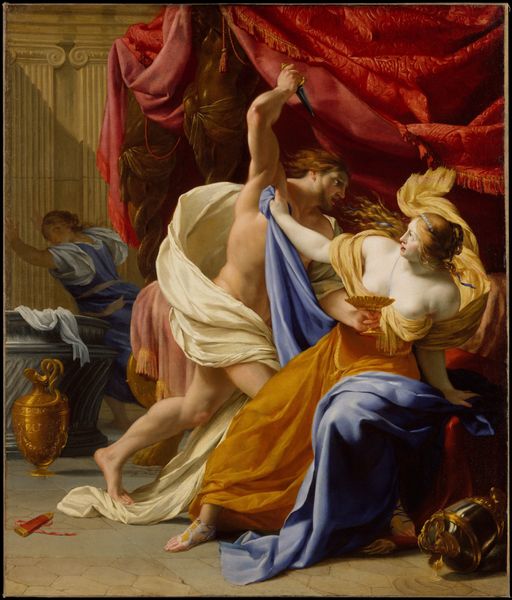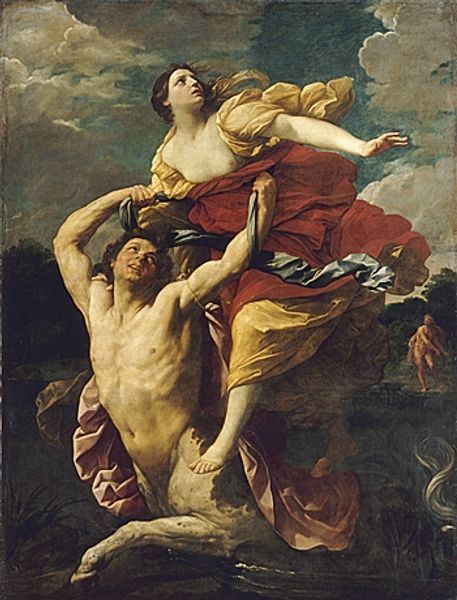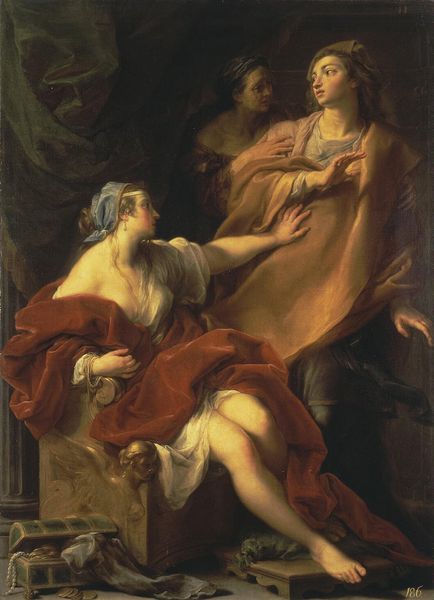
painting, oil-paint
#
portrait
#
baroque
#
painting
#
oil-paint
#
oil painting
#
famous-people
#
history-painting
#
nude
#
portrait art
Dimensions: 215 x 151 cm
Copyright: Public domain
Editor: Here we have Guido Reni's "Lucretia" from 1626, an oil painting depicting the Roman noblewoman in the moments before her suicide. The stark lighting and Lucretia’s upward gaze create a powerful sense of drama. What are your initial thoughts on the historical context of this work? Curator: Well, considering the socio-political landscape of the 17th century, and particularly the role of the Baroque movement, Reni’s "Lucretia" operates on multiple levels. Lucretia's story was used historically to represent female virtue, but here, it becomes a powerful commentary on agency within a patriarchal structure. Notice how her semi-nude state walks a tightrope, toeing the line between morality tale and eroticised image, catering to its aristocratic, male audience while simultaneously challenging viewers to contemplate the limitations placed on women. What does the painting suggest to you about the politics of display at the time? Editor: It's fascinating how her suicide becomes a statement, even if a tragic one, and I wonder if her defiance through death held different weight in a society grappling with evolving social norms. Do you think Reni was consciously engaging with that? Curator: Absolutely. Baroque art often weaponized emotion to drive home a message. This wasn't simply about recounting a historical event; it was about using Lucretia's plight to explore themes of power, virtue, and rebellion, concepts that were hotly debated in intellectual and courtly circles. Consider how this painting might have functioned within a specific gallery or palace. What conversation was Reni hoping to instigate amongst its viewers? Who controlled the narrative then? Editor: So much to think about! It's clear that this painting isn’t just a pretty picture, it’s a reflection of societal tensions and the evolving role of art in shaping public perception. Curator: Precisely. Analyzing it this way reveals the enduring power of art to both mirror and challenge the cultural norms of its time.
Comments
No comments
Be the first to comment and join the conversation on the ultimate creative platform.
